There are best trekking spots near Nashik for trek lovers. I had explored almost all of these trails personally, which I included in this guide.
Western Ghats surrounding this beautiful city hide some of Maharashtra’s most spectacular trekking destinations. It is also convenient place for trekkers living in Mumbai and coming Nashik through roadway.
From the thriller vertical climb of Harihar Fort to the spiritual journey at Anjaneri, each trek has its own story to tell. In this guide, I’ll share 12 amazing trekking spots with their difficulty levels, best visiting times, essential tips, and everything you need to plan your perfect mountain adventure.
Top 12 Trekking Places Near Nashik To Check Out (2025)
Nashik is home to Maharashtra’s most exciting treks, ranging from the famous steps of Harihar Fort to the sacred Anjaneri Fort, which is believed to be the birthplace of Lord Hanuman.
Here’s a complete list of the best trekking places with important details:
| Trekking Place | Located Near | Famous For |
|---|---|---|
| Harihar Fort | 43 km via. NH848 | Rock-cut steps at an 80° angle, with a historical background |
| Anjaneri Fort | 32 km via. Nashik Fwy and NH848 | Birthplace of Lord Hanuman, Jain caves |
| Brahmagiri Fort | 30 km from Nashik | Trimbakeshwar Temple, beautiful nature views |
| Kalsubai Peak | 70 km via. Mumbai – Agra Hwy/Mumbai | The highest peak in Maharashtra |
| Ratangad Fort | 180 km from Nashik | “Fort of jewels,” views of Bhandardara Dam |
| Salher Fort | 137 km from Nashik | The second-highest fort in Maharashtra, a historical battle site |
| Ramshej Fort | Near Nashik | Defensive architecture, strategic location |
| Tringalwadi Fort | 50 km via Mumbai – Agra Hwy/Mumbai – Nashik Expy | Bird watching, moderate difficulty level |
| Sandhan Valley | 87.7 via Mumbai – Agra Hwy/Mumbai – Nashik Expy | Valley of Shadows |
| Mulher Fort | 120.3 km via Mumbai – Agra Hwy | Part of the trio with Mora and Hargad forts |
| Chaulher Fort | Wadi Chaulher village near Satana, Nashik (approx. 90 km) | Scenic views, ancient ruins, and less crowded trekking trail |
| Kulang Fort | 60 km from Nashik | Rugged terrain, dense forests, and part of the Sahyadri forts chain |
Now let’s look at each of these amazing trekking spots in detail. While visiting these places, consider using local cab services for a comfortable trip to the starting points. For reliable transportation options, check out the cab services in Nashik that might offer special packages for trekkers.
1. Harihar Fort
Trek Height: 3,676 ft (1,120 m)
Difficulty Level: Moderate to Difficult
Harihar Fort is almost vertical rock-cut steps carved at an 80° angle. Built during the Yadava dynasty, this fort served as a key watch point on the trade route.
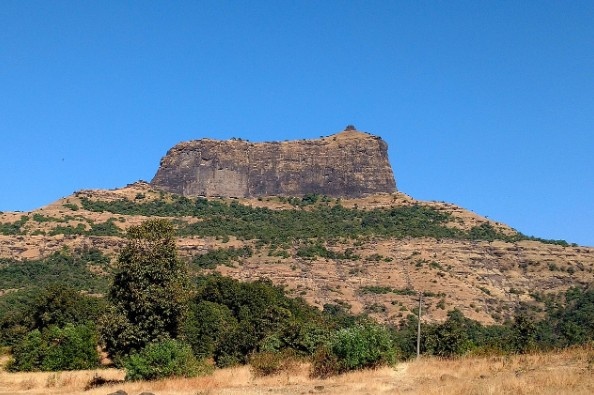
The final climb up the steep steps is a true test of courage, but the amazing views from the top make it worth the effort. On clear days, you can see other forts like Anjaneri and Brahmagiri.
The fort has a small temple with Shiva and Hanuman idols and a water tank. The best time to visit is from October to February, but monsoon climbs offer a thrilling experience for those who don’t mind the challenge of wet steps. Many trekkers also visit nearby historical places to complete their Nashik experience.
2. Anjaneri Fort
Trek Height: 4,264 feet
Difficulty Level: Easy To Moderate
Anjaneri Fort holds special significance as the birthplace of Lord Hanuman. This makes it both a trekking destination and a pilgrimage site.
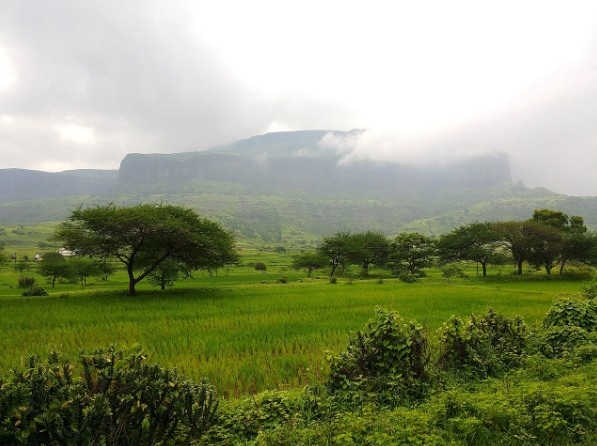
The trek passes through small villages, forests with monkeys, and cool streams. At the top, you’ll find the Anjani Mata Temple, where Goddess Anjani meditated for a child. There are also 108 ancient Jain caves dating back to the 11th century that add historical value to your trek. There’s even a small food stall at the top.
The fort offers clear views of Nashik and the Kavnai Fort in the distance. Monsoon and winter are ideal times to visit when the mountain is covered in unique wildflowers that bloom only in this area.
3. Brahmagiri Fort
Trek Height: 4,500 feet
Difficulty Level: Easy to Moderate
Brahmagiri Fort is situated near the sacred Trimbakeshwar Temple and the banks of the Godavari River. This fort holds deep spiritual meaning with mentions in ancient texts and stories of Sage Gautama and Lord Shiva.
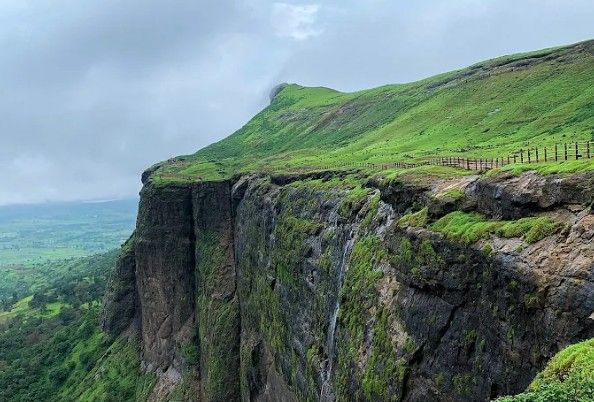
The trek takes you through lush forests and open landscapes, with a fairly gentle climb that’s good for beginners. From the top, you get stunning 360-degree views of the Western Ghats and nearby water bodies.
The fort is linked to the story of how the Godavari River started, adding to its spiritual presence. Many trekkers combine this with a visit to the famous Trimbakeshwar Temple for a full-day adventure.
4. Kalsubai Peak
Trek Height: 5,400 feet
Difficulty Level: Moderate to Difficult
Kalsubai Peak holds the title of the highest peak in Maharashtra. This is a must-climb for serious trekkers. The trail stretches 6.6 km with an elevation gain of 2,700 feet.
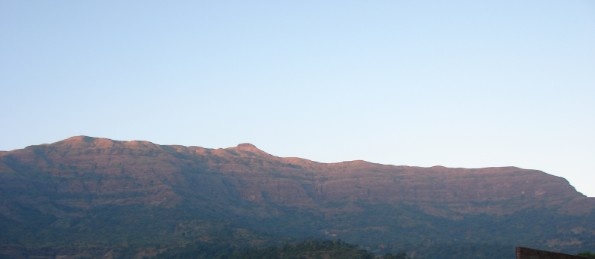
To help climbers, metal railings, ladders, and chains have been placed at steep spots. Reaching the summit rewards you with breathtaking views of other peaks, valleys, and the intricate water systems of the Sahyadri range.
There’s a small temple at the top where many trekkers offer prayers after their climb. The peak is named after a local woman who lived on the mountain, with many stories about her life shared by guides.
5. Ratangad Fort
Trek Height: 4,255 feet
Difficulty Level: Moderate
Ratangad Fort, also known as the “Fort of Jewels,” is situated in the historic village of Ratanwadi. Dating back to the 6th century during the Kalchuri dynasty, this fort offers more than just a trek.
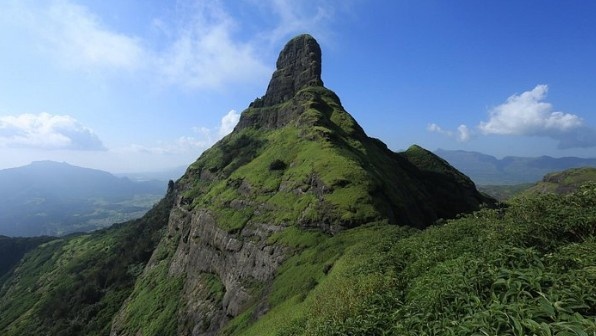
The uphill path takes you through green forests before revealing amazing natural views. The fort’s walls, towers, and lookout points show its past glory. The most famous spot is “Nedhe” (eye of the needle), a natural rock hole that offers unique views of Bhandardara Dam.
You’ll also find ancient water tanks and carvings of Ganesh that hint at the fort’s rich history. During monsoon, you will find clear skies and pleasant temperatures. The trek takes approximately 2-3 hours, which is a suitable choice for individuals with average fitness levels.
6. Salher Fort
Trek Height: 5,141 feet
Difficulty Level: Moderate to Difficult
Salher Fort is the second-highest fort in Maharashtra, holding great historical significance. This fort was the site of a major battle between the Marathas and Mughals in 1672, where Chatrapati Shivaji Maharaj’s forces claimed victory.
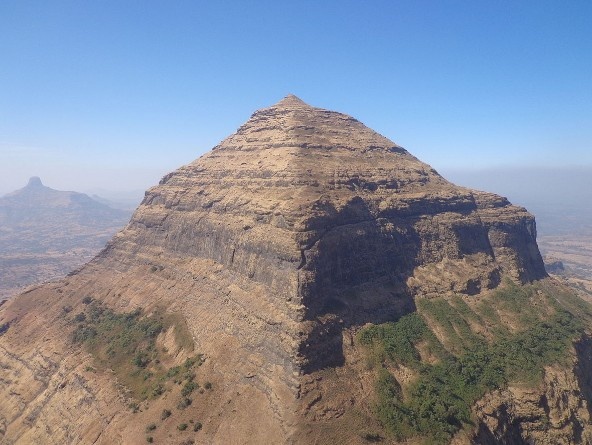
The trek involves climbing through rocky terrain and dense forests before reaching the massive plateau at the top. Stone steps guide most of the way, though some sections require careful footing. At the summit, you’ll find ancient temples, water cisterns, and ruins of military structures.
The views from nearby Mulher Fort to distant mountain ranges. Like many waterfalls in Nashik, the fort area sees small seasonal cascades during the rainy season.
7. Ramshej Fort
Trek Height: 3,000 feet
Difficulty Level: Easy
Ramshej Fort is situated near Nashik city, making it ideal for a quick day trek. It was built during the Satavahana period and later came under the control of various rulers. This fort was a key defense position.
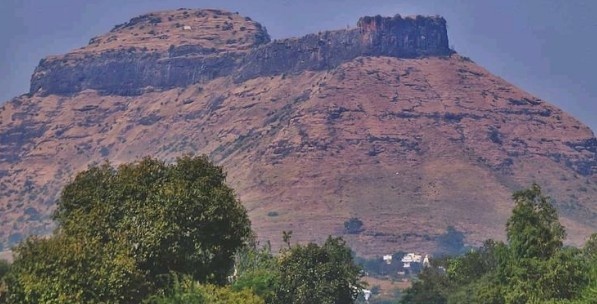
The trek begins with a gentle slope that gradually becomes steeper as you approach the summit. Metal railings are particularly helpful in challenging sections. Stone-carved steps lead to the entrance gate, which still shows impressive craftsmanship.
Inside, you’ll discover old water tanks, ruined buildings, and a small temple. The fort offers clear views of Nashik city and the surrounding hills. Trekkers usually combine Ramshej with visits to other places in Nashik to make the most of their day.
8. Tringalwadi Fort
Trek Height: 3,000 feet
Difficulty Level: Easy
Tringalwadi Fort, located near Igatpuri, is a perfect trek for beginners and families. The path up is clearly marked with stone steps almost the entire way, making it easy to follow.
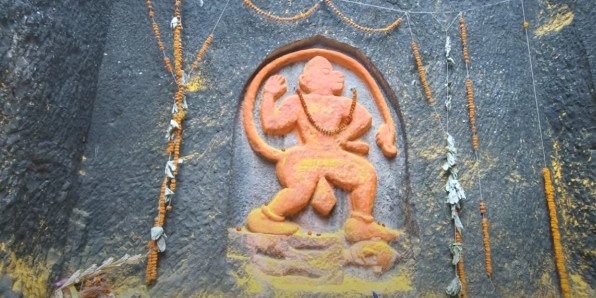
This trek takes only about an hour to complete, so even children and older adults can enjoy it. At the top, you can see a small Hanuman temple that draws religious visitors. The fort’s walls and structures are mostly in ruins, yet still demonstrate its importance in overseeing trade routes.
Birdwatchers love this fort for spotting various hill birds and eagles that soar at eye level. You can visit Tringalwadi year-round, though the post-monsoon greenery from September to December creates the most beautiful setting.
9. Sandhan Valley
Valley floor to Rim: 300 feet
Difficulty Level: Moderate to Difficult
Sandhan Valley, often called the “Valley of Shadows,” is unlike any other trek near Nashik. This massive canyon with towering rock walls creates a unique trekking experience through a narrow gorge that sometimes gets only 15 feet wide.
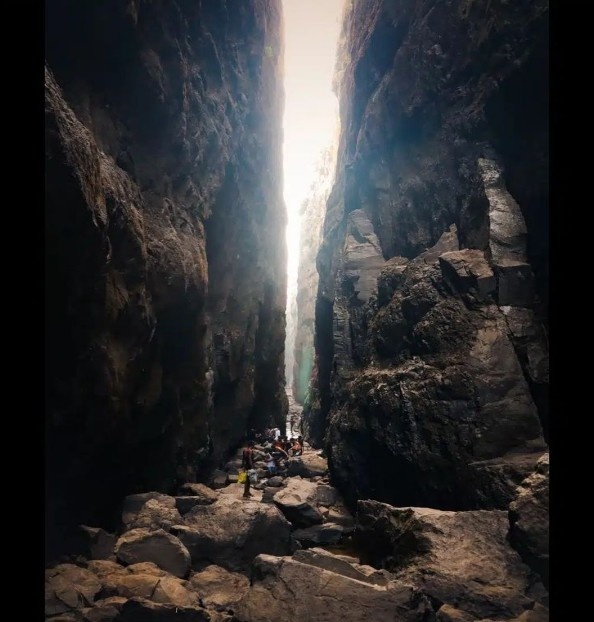
The trek involves walking on rocks, wading through seasonal streams, and occasionally rappelling during the wet season. The valley remains cool and dark most of the day as sunlight barely reaches the bottom.
The most exciting part is a 45-foot rappelling section, which requires guided assistance and adds an adventure element. During monsoons, small waterfalls form along the rock faces, similar to many waterfalls in Nashik. The trek takes 4-5 hours one way and requires good physical condition.
10. Mulher Fort
Trek Height: 4,300 feet
Difficulty Level: Moderate
Mulher Fort is part of a historic trio, along with nearby Mora and Hargad forts. This creates an impressive defensive line. Starting from Mulher village, the trek follows an ancient path once used by soldiers and supplies.
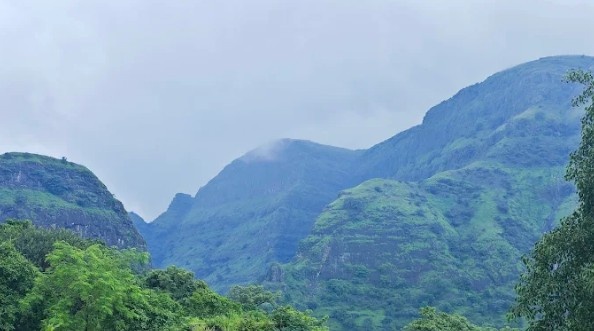
The route has old stone steps and flat sections that make for a varied climbing experience. This fort changed hands many times between Maratha, Mughal, and British forces, giving it rich historical significance.
At the top, you’ll find well-preserved gates, bastions, and water tanks that showcase medieval engineering. Dedicated trekkers often attempt to complete all three forts in a single day, although it requires an early start. Mulher offers both natural beauty and cultural history.
11. Chaulher Fort
Trek Height: 3,700 ft (1,128 m)
Difficulty Level: Easy to Moderate
Chaulher Fort, located near Wadi Chaulher village in Satana, Nashik district, is a lesser-known hill fort with rich Maratha and Mughal history.
The trek is about 3 km one way and takes roughly 1.5 hours, featuring three intricately carved stone gateways and ruins including temples dedicated to Lord Hanuman and Lord Chaurangnath.
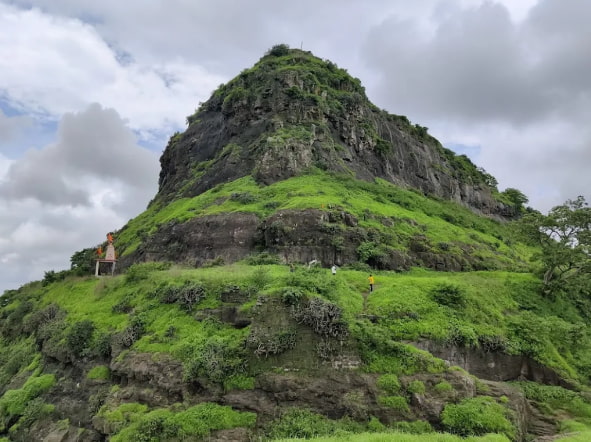
The fort offers panoramic views of the Selbari-Dolbari and Satmala mountain ranges. Though the fort lies in ruins, it still has rainwater tanks and old fortification remnants. The best time to visit is between September and February. Visitors must carry their own food and water as no facilities are available on the fort. Accommodation can be found in Satana town.
12. Kulang Fort
Trek Height: 4,226 ft (1,288 m)
Difficulty Level: Moderate to Difficult
Kulang Fort is a great place for trekking with some hard paths and thick forests. It was built during the Maratha period and was part of a group of forts protecting the region.
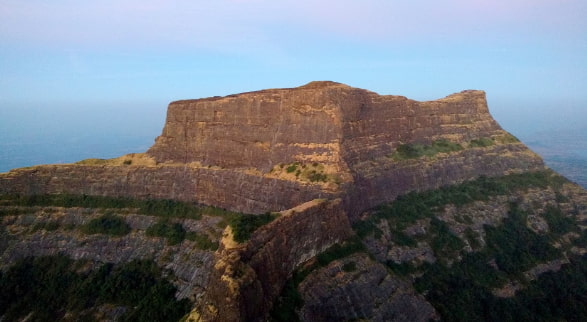
The trek has narrow trails and rocky areas, which give it a good challenge. At the top, you can see the old fort walls and water tanks, as well as with beautiful views of other nearby forts such as Madangad and Ratangad. The best time to travel is from October to February when the weather is good. Many trekkers also visit other forts to enjoy the complete experience of trekking in the Sahyadri hills.
Best Time To Visit Trekking Places Near Nashik
October to February is the perfect time for trekking near Nashik. During these months, you’ll enjoy cool, dry weather with clear skies and amazing views.
Many trekkers also visit during monsoons (June to September) to see waterfalls and lush greenery, but be careful as trails become slippery and can be dangerous. Summer months are best avoided due to extreme heat.
Trekking Tips To Follow
Here are some key tips to make your trekking experience near Nashik safe, fun, and memorable. Following these simple guidelines will help you enjoy your adventure while staying prepared for any situation.
- Wear proper trekking shoes with good grip to prevent slipping.
- Carry at least 2 liters of water to stay hydrated throughout the trek.
- Pack light snacks like nuts and energy bars for quick energy boosts.
- Apply sunscreen and wear a hat to protect yourself from direct sunlight.
- Inform someone about your trekking plan and expected return time.
- Carry a basic first aid kit with bandages and necessary medications.
- Start early in the morning to avoid afternoon heat and darkness.
Suggested Reads:
Conclusion: Explore The 12 Best Trekking Destinations Near nashik
These 12 trekking destinations around Nashik offer unforgettable experiences that blend adventure, history, and natural beauty perfectly.
Each trail has its own historical story through ancient forts, stunning valleys, and panoramic views that stretch across Maharashtra. So plan your perfect weekend getaway in the hills surrounding Nashik and create your own trekking stories.
Pack your hiking boots, gather your friends, and start your next adventure near Nashik.
FAQs
Solo trekking requires extra caution near Nashik. Most popular trails are generally safe during daylight hours, but it’s always a good idea to inform someone about your plans and carry essential safety gear.
Anjaneri Fort offers a beginner-friendly experience with well-marked trails and moderate slopes. The trek offers stunning views and historical sites without requiring extreme physical demands.
Brahmagiri Fort features about 750 concrete steps that lead to the origin point of the Godavari River. Two temples mark this sacred spot before the river flows toward Trimbakeshwar village.
Many forts allow trekking and camping, particularly Harihar Fort, Anjaneri, and Dhodap Fort. Always check local regulations first and practice no-trace camping to protect these historical sites.
Trekking near Nashik can be very affordable. Travel in groups, bring your own food and water, and choose nearby forts like Ramshej. Use public transport to keep costs minimal.